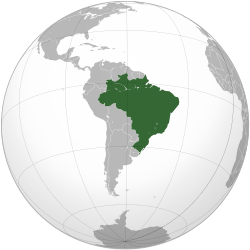República Velha
| Republic of the United States of Brazil | ||||||||||
| República dos Estados Unidos do Brasil | ||||||||||
|
||||||||||
|
||||||||||
|
Motto Ordem e Progresso "Order and Progress" |
||||||||||
|
Anthem |
||||||||||
|
Brazil at its largest territorial extent, including Acre
|
||||||||||
| Capital | Rio de Janeiro | |||||||||
| Languages | Portuguese | |||||||||
| Religion | Secular state | |||||||||
| Government |
Presidential Republic Coronelist Oligarchy Military Dictatorship (1889-1894) |
|||||||||
| President | ||||||||||
| • | 1889–1891 | Marshal Deodoro da Fonseca (first) | ||||||||
| • | 1926–1930 | Washington Luís (last) | ||||||||
| Legislature | National Congress | |||||||||
| • | Upper house | Senate | ||||||||
| • | Lower house | Chamber of Deputies | ||||||||
| Historical era | 19th–20th century | |||||||||
| • | Proclamation of the Republic | 15 November 1889 | ||||||||
| • | Adoption of the Republic's Constitution | 24 February 1891 | ||||||||
| • | Revolta da Armada | 1893-1894 | ||||||||
| • | Federalist Riograndense Revolution | 1893-1895 | ||||||||
| • | End of Sword's Dictatorship | 15 November 1894 | ||||||||
| • | Revolution of 1930 | 3 November 1930 | ||||||||
| Area | ||||||||||
| • | 1903 | 8,515,767 km² (3,287,956 sq mi) | ||||||||
| Population | ||||||||||
| • | 1890 est. | 14,333,915 | ||||||||
| • | 1900 est. | 17 438 434 | ||||||||
| • | 1920 est. | 30 635 605 | ||||||||
| Currency | Real | |||||||||
|
||||||||||
The First Brazilian Republic or República Velha (Portuguese pronunciation: [ʁeˈpublikɐ ˈvɛʎɐ], "Old Republic") is the period of Brazilian history from 1889 to 1930. The República Velha ended in 1930 with a military coup, also known as Brazilian Revolution of 1930 that installed Getúlio Vargas as a dictator.
On November 15, 1889 Marshal Deodoro da Fonseca deposed Emperor Dom Pedro II, declared Brazil a republic, and reorganized the government.
From 1889 to 1930, the government was a constitutional democracy, but democracy was nominal.
In reality, the elections were rigged, voters in rural areas were pressured or induced to vote for the chosen candidates of their bosses (see coronelismo) and, if all those methods did not work, the election results could still be changed by one sided decisions of Congress' verification of powers commission (election authorities in the República Velha were not independent from the executive and the Legislature, dominated by the ruling oligarchs). This system resulted in the presidency of Brazil alternating between the oligarchies of the dominant states of São Paulo and Minas Gerais. This regime is often referred to as "café com leite", 'coffee with milk', after the respective agricultural products of the two states.
This period ended with a military coup that placed Getúlio Vargas, a civilian, in the presidency; Vargas remained as dictator until 1945.
The Brazilian republic was not an ideological offspring of the republics born of the French or American Revolutions, although the Brazilian regime would attempt to associate itself with both. The republic did not have enough popular support to risk open elections. It was a regime born of a coup d'état that maintained itself by force. The republicans made Deodoro president (1889–91) and, after a financial crisis, appointed Field Marshal Floriano Vieira Peixoto Minister of War to ensure the allegiance of the military.
...
Wikipedia



